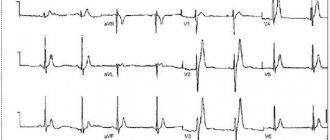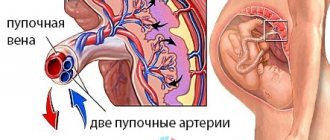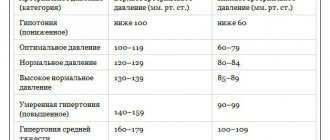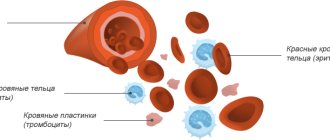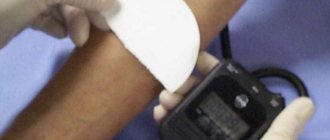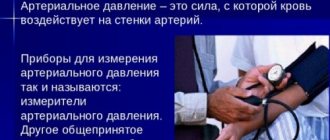Pediatric otorhinolaryngology is based on age and is quite diverse. At an early age, diseases occur that are not typical for adults, and vice versa. But there are pathological disorders that are characteristic of different age groups - these are acute conditions. The article will discuss only some of them, namely those that parents often encounter. The purpose of the article is to provide assistance at the pre-medical stage.
Bleeding from the nose in a child or epistaxis is the leakage of blood from the vascular structures of the mucous membrane. In 4% of cases, the quality of life deteriorates. More than half of the population experiences at least one episode of epistaxis. In 20% of children, nosebleeds (NB) of a recurrent type are recorded, and there are signs of chronic blood loss.
Types of nosebleeds
Nosebleeds develop due to abnormal structure of the capillary walls or due to a deficiency of blood clotting factors. There are one-time, recurrent and habitual (occur several times a year) epistaxis.
The most important classification is the division by source localization area, when viewed from a practical point of view:
- vessels of the cavity type (anterior or posterior region of the nose);
- extracavitary vessels (intracranial structures, nasopharynx, paranasal sinuses).
Anterior type nosebleeds do not pose any health hazard. Posterior NK is more intense, because in this case there is a violation of large vessels. This condition involves significant blood loss and can pose serious risks. The blood flows down the throat, penetrating the stomach and oral cavity, rather than flowing out of the nasal passages.
Causes
As a rule, nosebleeds occur due to two mechanisms: coagulation disorders and increased permeability of vascular structures. Our nose is equipped with many small blood vessels. In the area of the anterior nasal septum they form a dense braid. Because the thin blood vessels adhere tightly to the surface of the thin septum, they can be damaged relatively easily, causing the typical nosebleed. Other blood vessels, on the contrary, are very rarely damaged.
The main causes of nosebleeds in a baby:
1. Infectious diseases (diphtheria, ARI or tuberculosis).
2. Thinning of the mucosa (atrophic form of rhinitis, long-term therapy with vasoconstrictor drops/sprays).
3. Pathologies of vascular structures and blood (hemorrhagic vasculitis, thrombocytopenia or hemophilia).
4. Symptomatic increase in blood pressure (emotional stress, excessive physical activity, heat or sunstroke).
5. Somatic diseases (lack of vitamin C, K and calcium, chronic liver diseases, vegetative-vascular dystonia, etc.).
6. Nose injuries (fracture, bruise, damage by any object, etc.).
Often a child’s nose bleeds due to disturbances in the microclimate in the room. Insufficient air humidity or high ambient temperatures lead to dryness of the mucous membrane. This helps reduce the elasticity of the vascular wall, which becomes fragile. Often a child's nose may bleed for no reason.
Diagnosis and methods of treating pathology
In the process of examining the child and interviewing the parent, the doctor needs to obtain as much information as possible about the causes of frequent blood loss. In this regard, he is interested in answers to the following questions:
- What was the obvious cause of the bleeding: injury, illness, or blowing your nose?
- How often do blood losses occur and how were they stopped?
- What medications is the patient taking? Do they include drugs that prevent blood clotting?
- What diseases does the child (parents, relatives) suffer from?
The doctor examines the child's skin for bruises and small capillaries, confirming the fragility of the blood vessels. Additionally, the child may be prescribed the following examinations:
- general blood and urine tests;
- coagulogram;
- electrocardiography;
- X-ray of the sinuses;
- computed tomography (CT).
The doctor's first task is to stop blood loss. To do this, a specialist can use conservative methods, such as:
- anterior (posterior) tamponade;
- taking hemostatic drugs.
If this method is ineffective, surgical procedures are used that involve cauterization of bleeding vessels:
- using electric current (electrocoagulation);
- liquid nitrogen (cryocoagulation);
- high frequency radio waves;
- a narrow laser beam.
After the bleeding stops, the causes are identified and work is done to eliminate them. If there are pathologies in the form of a deviated nasal septum, surgery to correct it is indicated. If there is an obvious infectious component, antibacterial therapy, etc. is prescribed.
Symptoms
Epistaxis develops against the background of general well-being. Possible previous symptoms include itching in the sinuses, headaches or dizziness. Blood flows into the nasopharynx along the back wall of the larynx or flows out.
Associated symptoms with blood loss:
- flashing “flies” before the eyes;
- dizziness;
- pale skin;
- ringing and noise in the ears;
- general malaise;
- strong thirst;
- cardiopalmus.
Next, there is a decrease in blood pressure (BP). Characteristic shortness of breath appears, consciousness is impaired and fainting is possible. Vomiting blood also indicates the presence of a posterior type of nosebleed (when blood flows into the throat and is then swallowed).
Possible complications
If a child has bleeding from the nose, then ignoring this condition is unacceptable, because it is fraught with the development of the following complications:
- Hemorrhagic shock (hypovolemia). It develops when there is a small volume of circulating blood in the body. This is accompanied by the development of chronic hypoxia. Oxygen starvation leads to functional failure of systems and organs, and is also fraught with the development of irreversible changes.
- Degenerative changes in the mucosa. Drying of the mucous membrane leads to its thinning.
- Anemia. Frequent NK lead to blood loss, which is accompanied by frequent infectious diseases, lethargy and a decrease in the body's protective functions.
It is impossible to visually assess the level of blood loss in the posterior type of nosebleed. That is why you should consult a doctor for a comprehensive diagnosis to eliminate the possibility of complications.
How to make an appointment with a pediatrician
You can undergo an examination and receive the necessary recommendations at JSC “Medicine” (academician Roitberg’s clinic), which is located in the central district of Moscow near the Mayakovskaya metro station. Experienced pediatricians will determine the causes of nosebleeds in children and, if necessary, prescribe appropriate treatment.
Our clinic is located in the center of Moscow at 2nd Tverskoy-Yamskaya lane, building 10 (Mayakovskaya station). You can make an appointment with specialists by calling the help desk +7 (495) 995-00-33 (24 hours a day) or on the website using a special form.
What should parents do?
Nosebleeds in children are an unpleasant occurrence that are often harmless, but sometimes pose a serious health threat. To find out the causes of the symptom and get rid of it, it is better to contact experienced pediatric doctors who work at JSC “Medicine” (clinic of Academician Roitberg).
Diagnostics
To find out why a child has nosebleeds, a comprehensive examination is prescribed:
- coagulogram;
- visual examination of the nasal cavity;
- hemostasis study;
- detailed blood test;
- checking capillaries for mechanical stability;
- collecting anamnesis to determine the cause of NK.
Differential diagnosis is required. The doctor determines the bleeding area: lungs, stomach or nasal cavity (symptoms are similar). In the first case, the blood is scarlet, in the second it is foamy, in the third it is brown and does not flow down the back wall of the throat.
Treatment
To provide first aid to a child, you need to determine the area of damage. If the anterior vascular sections are affected, then nosebleeds will be more intense. In this case, the bleeding stops after the first medical procedures or on its own.
If nosebleeds in children are severe, then we are talking about damage to large vascular structures that are located in the posterior sections. This condition requires medical attention, because does not regress on its own.
How to stop nosebleeds - recommendations for parents:
1. Place the child’s body in an optimal position (sitting with the head tilted forward).
2. Behave calmly so as not to cause fear with your behavior; calm the child down.
3. Place cold on the bridge of your nose (a towel moistened with water, ice).
4. Place vasoconstrictor drops into your nose.
5. If the above measures do not help, then you can moisten a cotton swab with a 3% hydrogen peroxide solution and insert it into the nostril, pressing it to the nasal septum as high as possible.
6. If the manipulation does not produce results within 15-20 minutes, call an ambulance.
What to do is not recommended! Do not place the child on his back or tilt his head back. This measure causes blood to flow into the throat and stomach, which soon causes vomiting. If you are unable to stop the bleeding on your own, you must call an ambulance. If NK occurs frequently, it is recommended to visit an otolaryngologist.
If a child develops nosebleeds, contact the ENT department at the RebenOK clinic. You can also use the online consultation service.
It is necessary to consult a doctor to find out why your child is bleeding from the nose. If tamponade is not effective, then surgical treatment using endoscopic electrocoagulation is prescribed. To avoid repeated bleeding, the affected blood vessels in the nasal mucosa are “closed.” Local anesthesia is performed using electricity. This procedure can also be performed using medications.
How to stop bleeding: recommendations for parents
To begin with, the child should not lie down or tilt his head back, as blood may enter the lower respiratory tract or cause vomiting. Also, you should not put any tampons in your nose.
- The child needs to be seated and his head slightly tilted down, gently pinch the nostril for 3-5 minutes so that a blood clot forms and closes the injured vessel.
- If the blood continues to flow, repeat the procedure again.
- If possible, you can apply an ice pack or a handkerchief moistened with cold water to the bridge of the nose.
We draw the attention of parents: if the bleeding does not stop within 15-20 minutes, it is necessary to call an ambulance.
Prevention
Parents are able to prevent the development of epistaxis. Preventive measures for nosebleeds in children include adequate nasal hygiene, organization of a favorable indoor microclimate and timely treatment of hemostasis disorders.
For treatment of nosebleeds, contact the RebenOK clinic. Patients are treated by certified ENT doctors with extensive practical experience. The clinic is equipped with expert class equipment. The instruments and technical means used are designed for pediatric patients.
Preventive actions
Following simple recommendations by parents will help eliminate unpleasant moments associated with blood loss:
- Trim your child’s fingernails regularly to prevent injury to his nose;
- moisturize the nasal mucosa using saline solutions or special ointments;
- maintain optimal humidity in the room, use a humidifier;
- treat colds in a timely manner; do not blow your nose too often or too much during treatment;
- do not overuse vasoconstrictor drugs to prevent thinning of the mucosa.
We remind Kaliningrad residents that you can make an appointment with an otolaryngologist by making a preliminary application by filling out an online form, or by calling one of our clinics at the phone numbers listed on the website.
